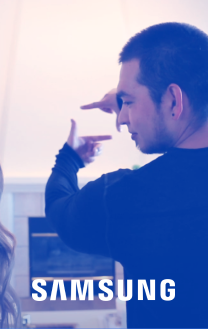We’re all familiar with the top eyewear brands — Ray-Ban, Burberry, Oakley, Apple (huh?), Microsoft (wait, what?). That’s right, in the not-so-distant future, we envision a world where consumers are getting their next pair of glasses from Apple’s Genius Bar or delivered to their doorstep by Snapchat. No, it won’t be because their frames are better than the competition, but because of the increased presence of augmented reality technology.
When asked about AR, Apple CEO, Tim Cook has said the technology will become as normal as “eating three meals a day.” The catalyst behind making such a bold statement a reality? Stylish, light-weight glasses with high-powered augmented reality lenses in them.
The current landscape accounts for about 1.96 billion AR users in the year 2021 with an estimated 2.4 billion users by 2023. However, to reach the tipping point for mass adoption, engaging with AR content needs to become a seamless experience. Unless you’re Tony Stark, the most practical way of accomplishing this is by leaving phones in pockets and putting a computer (for a lack of a better term) in a pair of glasses.
Imagine walking down the street in a pair of AR glasses that are indistinguishable from common readers or sunglasses. No longer will there be a need to worry about looking down at your phone for directions because your glasses will automatically show you where to go. Digital callouts such as arrows, street names, and distances can be safely overlaid in your current environment as you navigate through town. Directions are just the tip of the iceberg, as AR glasses will be able to recognize billboards and other advertisements for revolutionary marketing campaigns. Not only will concert posters come to life by way of a video within your stylish new AR glasses, but with just a few gestures or voice commands, you can purchase the tickets right then and there.
It sounds too good to be true, yet consumers are already doing all of this with their phones. With companies such as Snapchat, Microsoft, Apple (rumored), and others making moves in the wearable industry, the transition to standardizing AR glasses is all but inevitable.
The Players
At Gravity Jack, not only are we advocates of Microsoft’s HoloLens, but we have developed several projects specifically for it. Its object recognition and wide range of view are second to none within wearables space. It’s capable of recognizing a wide variety of hand gestures and voice commands. However, its current appearance isn’t quite ready for the catwalk at a fashion show. The wide display and safety strap will need to be significantly downsized before they are adopted by the general public.
That said, the HoloLens is 100% ready for mass adoption within a wide variety of industries. Its AR features are capable of bringing safety, efficiency, and education to a whole host of workplaces. Don’t take our word for it, the United States Army just signed a $21.8 billion (yes, you read that B correctly) contract with Microsoft to supply them with over 120,000 HoloLens devices over the next ten years.
Apple, on the other hand, hasn’t explicitly said that they are releasing an AR headset. Yet, there are a whole host of reasons to believe there is something in the works. The fact that their AR software ARKit and LiDAR come installed on every new iPhone and iPad they are developing lets us know what they think of the technology itself. Mix that with the patents they have filed regarding AR glasses and Tim Cook’s comments equating using AR to eating three meals a day gives us reason to believe we can expect something from Apple soon. Will they be fashionable enough for the general consumer? That’s TBD, but based on Apple’s history, the answer is likely yes.
Snapchat has also previewed what they have coming down the pipeline with their new Spectacles 3. The Spectacles are the first try from a major player in the AR space to create a unique and stylish pair of AR glasses — and by all accounts, they have accomplished that. At this moment, however, Spectacles are staying true to the Snapchat platform by catering to content creators — allowing users to place 3D content such as flying birds and overlay fun filters within their immediate surroundings. Not exactly the picture that was painted above with the AR directions and marketing examples. That said, it’s safe to assume that this is only the beginning for Snapchat in the wearable space and that the release of the Spectacles is likely to lead to bigger things for augmented reality down the road.
The Future
Ultimately, the initial release of AR headsets is just going to push the advancement of mass adoption from consumers. Phones and computers are continually getting smaller and faster with AR glasses destined to follow the same trajectory as the likes of Apple and Microsoft push each other to refine, upgrade and then release new versions of their glasses.
Which company is going to release THE must-have pair of AR glasses? There is no saying, and there will likely be more than one, but as AR content creators, the Gravity Jack team will be watching (some with glasses, some without) very closely.





